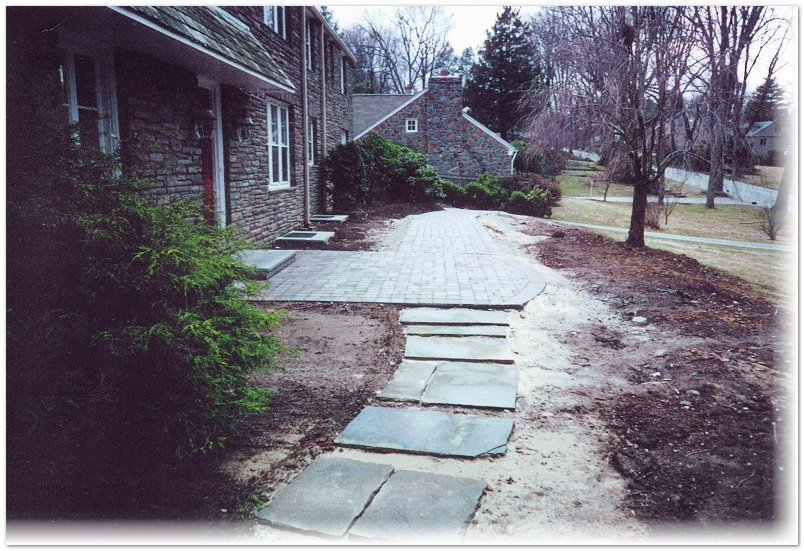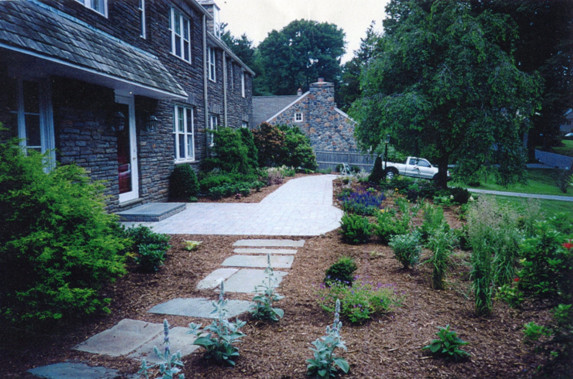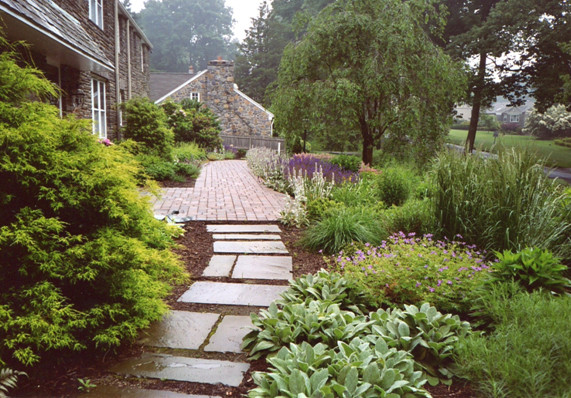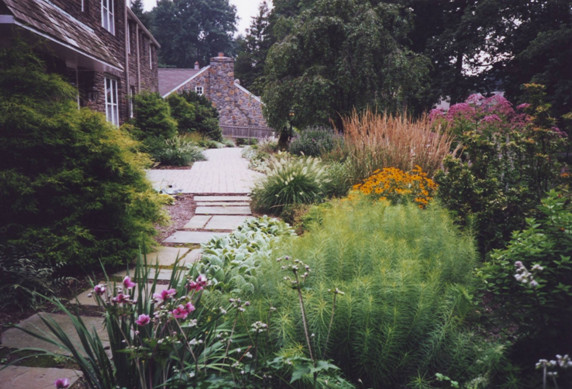One of the most important and least recognized aspects in designing a garden is time. Unlike materials used in construction (a 2″ x 4″ will always be 2″ x 4″), plant materials are going to grow. Obvious, yet amateurs and professionals alike make the same mistake again and again…they plant far too closely and/or don’t account for the future size of the plantings. The need for instant gratification and/or ignorance of the plants’ capabilities would seem to be the primary causes.
Over the course of the 35 + years I have been designing and installing gardens I have come to realize that few people understand what time will bring to the equation. Beginners especially have little or no idea of this….they’ve never experienced it, so how would they know? Hence this blog post.
Below is just one of our many jobs that we have done over the years, that will give an idea of the time component, using BEFORE, AFTER, and 1 YEAR LATER.
Before:
After (just planted):
One year later:
A few months later than the above:
So the design becomes what I envisioned as it was planted, but does not reveal itself for some time.
There are other components to what I call the evolution of the garden.
Even though I have decades of experience, I still can get both good and bad surprises in a garden’s design. Some plants will thrive…others – not so much. And despite all the experience I have, I cannot be spot-on every time. And that’s a good thing.
Some of the best combinations in designing a garden have come to me through this “weeding out” process. When one plant refuses to live up to my expectations, either something else in back gives me the line, or I pop something else in to see how it will perform – not what I had initially planned, but it turns out looking great. And if not, I try something else.
This really is one of the fun things of design – the failure of certain plants to do what they should!
Another component of garden evolution takes place in both my and my client’s heads.
As the garden goes through the seasons, both my client and I form new opinions about the design. A new client may not like, say, ornamental grasses,or finds that they love a particular plant. Sometimes I will introduce one – OK, I’ll sneak it in and wait for a reaction. Many times I have clients tell me how much they love a new plant that I brought in for a reaction. Designing requires fluidity and experience to get the very best results.
And time.
To discuss your own garden project, call me at 610.355.0703, or send me an email using the web contact form.
Steve Aardweg APLD
Check out Aardweg Landscaping on YouTube and on Houzz.




